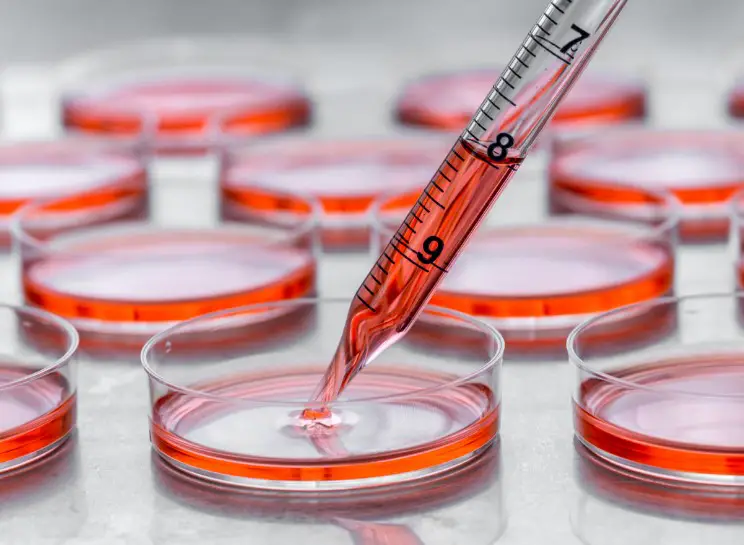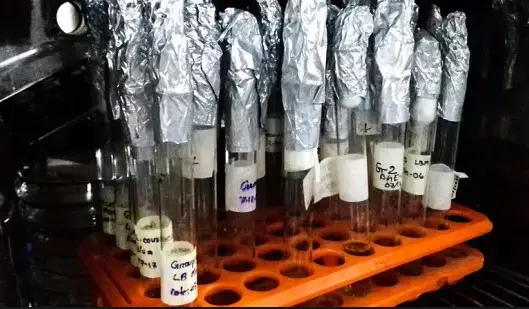In the dynamic world of biological research and industrial bioprocessing, the growth medium plays a crucial role in the cultivation of cells and microorganisms. This environment, where cells are grown, nurtured, and observed, must be meticulously formulated to support life. Among the myriad options available, basal and complete media stand out as foundational choices, each serving distinct purposes and applications in the lab.
Basal media provide the essential nutrients required for the basic survival of cells, including salts, vitamins, and amino acids, without any supplemental growth factors or hormones. On the other hand, complete media are enriched with these additional components to promote optimal cell growth and proliferation. This fundamental distinction marks the difference between merely sustaining cells and enabling them to thrive under laboratory conditions.
The selection between basal and complete media hinges on the specific requirements of the cells being cultured. Basal media cater to the minimal needs, offering a controlled environment for studying cellular processes without external influences. Meanwhile, complete media create a more nurturing setting, where cells can achieve their full growth potential, making them indispensable for more demanding cell culture applications.

Media Basics
Types of Media
In the realm of cell culture, the foundation of any successful experiment lies in the media used. Cell culture media can broadly be categorized into two main types: liquid and semi-solid. Liquid media, often used for the cultivation of microorganisms and cell lines, provide the necessary nutrients and environment for cell growth and proliferation. Semi-solid media, on the other hand, are typically utilized for specialized applications such as colony isolation or cell cloning, offering a firmer substrate for cell attachment and differentiation.
The role of media in cell culture cannot be overstated. It’s akin to selecting the right soil for planting; just as different plants require specific soil types, different cell types thrive in media tailored to their unique needs. Media composition directly influences cell growth, health, and functionality, making the choice of media one of the most critical steps in the cell culture process.
Basal Media Overview
Definition and Purpose
Basal media serve as the elementary layer for cell culture environments. These media provide the essential nutrients required for the survival of cells, including vitamins, amino acids, salts, and glucose. The purpose of basal media is to mimic the basic nutritional environment cells would naturally encounter, thereby supporting the fundamental physiological functions necessary for cell survival and minimal growth.
Common Components
The common components of basal media include:
- Glucose: Serves as the primary energy source.
- Amino acids: The building blocks for protein synthesis.
- Vitamins: Essential for various cellular functions.
- Salts: Maintain osmotic balance and pH levels.
These components are meticulously balanced to create an environment that supports cell viability and basic metabolic activities.
Complete Media Overview
Definition and Purpose
Complete media take the foundational aspects of basal media and enrich them with additional supplements such as serum, growth factors, and hormones. The aim of complete media is not just to support cell survival but to promote robust cell growth, proliferation, and differentiation. This enriched environment simulates more closely the complex in vivo conditions, enabling researchers to cultivate a broader range of cell types and perform more sophisticated experiments.
How It Differs from Basal Media
The key difference between basal and complete media lies in the supplementation. Complete media are augmented with components that are either not present in basal media or are found in higher concentrations. These supplements can significantly enhance cell culture outcomes by providing the specific cues necessary for cell growth and function.
Key Components
Nutrients in Basal Media
Essential Nutrients Listed
The essential nutrients found in basal media include:
- Carbohydrates: Primary energy source.
- Proteins/Amino acids: Crucial for tissue growth and repair.
- Lipids: Important for cell membrane formation.
- Vitamins and minerals: Support various cellular functions.
Their Roles in Cell Growth
Each nutrient plays a pivotal role in cell growth:
- Carbohydrates fuel cellular energy production.
- Amino acids are necessary for protein synthesis, impacting cell structure and function.
- Lipids contribute to the integrity and fluidity of the cell membrane.
- Vitamins and minerals are cofactors in enzymatic reactions vital for metabolism and growth.
Supplements in Complete Media
Types of Supplements Added
Supplements added to complete media include:
- Serum: Provides a rich mix of growth factors, hormones, and proteins.
- Growth factors and cytokines: Specific molecules that promote cell division and differentiation.
- Antibiotics: Used sparingly to prevent bacterial contamination.
Impact on Cell Culture Outcomes
The inclusion of supplements in complete media can dramatically improve cell culture outcomes by:
- Enhancing cell growth rate and viability.
- Promoting specialized cell functions.
- Improving the overall health and robustness of the cell culture.
Preparation and Usage
Preparing Basal Media
Basic Steps Involved
To prepare basal media:
- Measure and mix the basic components according to the recipe.
- Adjust pH to the desired level, typically around 7.4 for most cell types.
- Sterilize the media using filtration to remove any contaminants.
Tips for Consistency
- Always use high-quality reagents to avoid introducing impurities.
- Precisely follow the media recipe to ensure consistent results.
- Regularly calibrate equipment like pH meters to maintain accuracy.
Enhancing to Complete Media
How to Supplement Basal Media
To convert basal media to complete media:
- Identify the specific needs of your cell type (e.g., growth factors, serum concentration).
- Add supplements gradually while monitoring cell response.
- Adjust the formulation as necessary to optimize cell growth and health.
Considerations for Different Cell Types
- Sensitivity to serum: Some cells may require serum-free formulations.
- Growth factor requirements: Specific cell types may need particular growth factors.
- Adaptation period: Cells may require time to adapt to a new media composition.
Applications
Basal Media Applications
Where and Why It’s Used
Basal media are the backbone of basic cell culture protocols, especially when the primary aim is to maintain cell lines in their most fundamental state. These media are extensively utilized in:
- Routine cell maintenance: Providing a stable environment for cells that do not require specialized growth factors or conditions.
- Primary cultures: Supporting the initial growth phase after tissue dissociation before specific supplements are introduced.
- Control experiments: Serving as a benchmark in comparative studies where the effects of adding or withholding certain nutrients or supplements are examined.
The simplicity and minimalistic nature of basal media make them indispensable in settings where the focus is on cell viability rather than differentiation or proliferation.
Complete Media Applications
Advantages in Specific Contexts
Complete media are enriched environments that cater to the advanced needs of cell culture, offering distinct advantages in contexts such as:
- High-yield production: Essential in biotechnological and pharmaceutical applications where the goal is to achieve maximum cell density and productivity.
- Differentiation studies: Providing the precise conditions required for stem cell differentiation into specific cell types.
- Disease modeling: Enabling the cultivation of cells under conditions that mimic disease states for research and drug development purposes.
The complexity and adaptability of complete media make them the medium of choice for specialized research and industrial applications that demand beyond basic cell survival.
Selection Criteria
Choosing Basal or Complete
Factors to Consider
When deciding between basal and complete media, several factors come into play:
- Cell type: Specific requirements of the cells being cultured, such as sensitivity to certain supplements.
- Research objective: Whether the study focuses on basic cellular maintenance, growth, differentiation, or specific physiological functions.
- Budget constraints: Complete media are generally more expensive due to their enriched composition.
Examples of Decision-making Scenarios
- Scenario 1: A lab studying the basic cellular mechanisms might opt for basal media to reduce variables in their experiments.
- Scenario 2: A biotech company producing antibodies might choose complete media to maximize cell growth and antibody production.
These examples illustrate the importance of aligning media selection with experimental goals and constraints.
Advantages and Limitations
Pros of Basal Media
Situations Where Basal Media is Preferred
Basal media shine in situations requiring simplicity and control:
- Educational settings: Where basic principles of cell culture are taught.
- Budget-sensitive research: Minimizing costs while maintaining cell viability.
- Control groups in experiments: Providing a baseline to assess the effect of adding specific nutrients or factors.
The uncomplicated composition of basal media offers a clear advantage in these contexts, allowing for straightforward maintenance and analysis.
Pros of Complete Media
Situations Where Complete Media is Beneficial
Complete media are advantageous in scenarios demanding enhanced cell growth and functionality:
- Regenerative medicine: Where stem cells are differentiated into specific cell types for therapeutic applications.
- High-throughput screening: Facilitating rapid growth and proliferation for drug discovery processes.
- Complex disease modeling: Allowing cells to exhibit disease-specific characteristics for research and therapeutic strategy development.
In these applications, the enriched environment of complete media is crucial for achieving the desired outcomes.
Limitations to Consider
Challenges with Each Type of Media
Both basal and complete media have their set of limitations that must be considered:
- Basal Media:
- Limited support for specialized cell functions or rapid growth.
- May not be suitable for long-term cultures requiring specific growth factors.
- Complete Media:
- Increased risk of variability and complexity, potentially complicating experimental outcomes.
- Higher cost due to enriched components.
Frequently Asked Questions
What is Basal Media?
Basal media are formulations designed to meet the basic nutritional requirements of cells. These media contain essential elements like salts, vitamins, and amino acids, but lack the growth factors and hormones found in complete media. They are primarily used for the maintenance of cells in a minimal environment, where the basic metabolic needs are met.
How is Complete Media Different from Basal Media?
Complete media differ from basal media by the addition of supplemental growth factors, hormones, and sometimes serum, which enhance cell growth and proliferation. This makes complete media suitable for a wide range of cell culture applications, especially those requiring optimal cell performance and yield.
When Should I Use Basal Media Over Complete Media?
Basal media should be used when the goal is to study cells under minimal nutritional conditions or when wanting to control the external influences on cell growth. It is ideal for experiments requiring the examination of cellular processes without the confounding effects of additional growth factors.
Can Basal Media be Converted to Complete Media?
Yes, basal media can be converted to complete media by the addition of specific growth supplements, hormones, or serum as required by the cell line being cultured. This flexibility allows researchers to tailor the media to the specific needs of their experiments.
Conclusion
The choice between basal and complete media significantly impacts the outcome of cell culture experiments. Understanding their differences and applications is crucial for any researcher working in the field of cell biology or biotechnology. By selecting the appropriate medium, scientists can ensure their cells have the necessary environment for growth, development, and study.
In summary, while basal media offer a fundamental environment for cell survival, complete media provide an enriched atmosphere that promotes robust cell growth and proliferation. The decision on which to use hinges on the specific needs of the research, highlighting the importance of a deep understanding of both media types in achieving desired experimental results.

